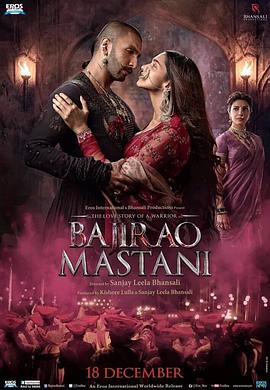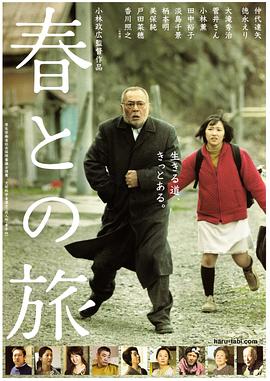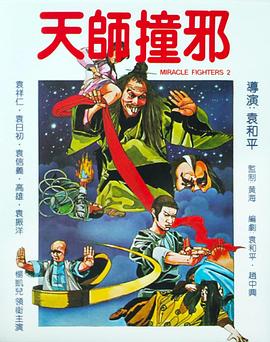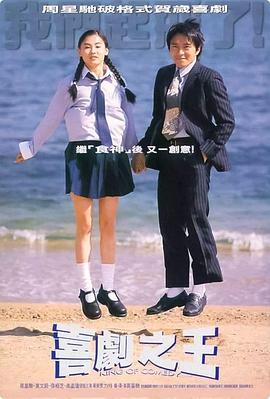尽尽资源
欧洲的某个地方剧情介绍
欧洲的某个地方剧情片免费观看,该剧情片1948年上映于其它,是一部好看的其它剧情片,主演Artúr,Somlay,Miklós,Gábor,Zsuzsa,Bánki,导演Radványi,Géza执行拍摄。剧情片欧洲的某个地方讲的什么:
Somewhere in the remote region, the war ends. In the midst of ruined cities and houses in the streets, in rural hamlets, everywhere where people still live, are children who have lost their homes and parents. Abandoned, hungry, and in rags, defenseless and humiliated, they wander through the world. Hunger drives them. Little streams of orphans merge into a river which rushes forward and submerges everything in its path. The children do not know any feeling; they know only the world of their enemies. They fight, steal, struggle for a mouthful of food, and violence is merely a means to get it. A gang led by Cahoun finds a refuge in an abandoned castle and encounters an old composer who has voluntarily retired into solitude from a world of hatred, treason, and crime. How can they find a common ground, how can they become mutual friends The castle becomes their hiding place but possibly it will also be their first home which they may organize and must defend. But even for this, the price will be very high. To this simple story, the journalist, writer, poet, scriptwriter, movie director, and film theoretician Béla Balázs applied many years of experience. He and the director Géza Radványi created a work which opened a new postwar chapter in Hungarian film. Surprisingly, this film has not lost any of its impact over the years, especially on a profound philosophical level. That is to say, it is not merely a movie about war; it is not important in what location and in what period of time it takes place. It is a story outside of time about the joyless fate of children who pay dearly for the cruel war games of adults. At the time it was premiered, the movie was enthusiastically received by the critics. The main roles were taken by streetwise boys of a children's group who created their roles improvisationally in close contact with a few professional actors, and in the children's acting their own fresh experience of war's turmoil appears to be reflected. At the same time, their performance fits admirably into the mosaic of a very complex movie language. Balázs's influence revealed itself, above all, in the introductory sequences an air raid on an amusement park, seen in a montage of dramatic situations evoking the last spasms of war, where, undoubtedly, we discern the influence of classical Soviet cinematography. Shooting, the boy's escape, the locomotive's wheels, the shadows of soldiers with submachine guns, the sound of a whistle—the images are linked together in abrupt sequences in which varying shots and expressive sharp sounds are emphasized. A perfectly planned screenplay avoided all elements of sentimentality, time-worn stereotypes of wronged children, romanticism and cheap simplification. The authors succeeded in bridging the perilous dramatic abyss of the metamorphosis of a children's community. Their telling of the story (the scene of pillaging, the assault on the castle, etc) independently introduced some neorealist elements which, at that time, were being propagated in Italy by De Sica, Rossellini, and other film artists. The rebukes of contemporary critics, who called attention to formalism for its own sake have been forgotten. The masterly art of cameraman Barnabás Hegyi gives vitality to the poetic images. His angle shots of the children, his composition of scenes in the castle interior, are a living document of the times, and underline the atmosphere and the characters of the protagonists. The success of the picture was also enhanced by the musical art of composer Dénes Buday who, in tense situations, inserted the theme of the Marseilaise into the movie's structure, as a motive of community unification, as an expression of friendship and the possibility of understanding. Valahol Europaban is the first significant postwar Hungarian film. It originated in a relaxed atmosphere, replete with joy and euphoria, and it includes these elements in order to demonstrate the strength of humanism, tolerance, and friendship. It represents a general condemnation of war anywhere in the world, in any form.猜您喜欢
 HD中字其它
HD中字其它帝国双璧
兰维尔·辛格,佩丽冉卡·曹帕拉,迪皮卡·帕度柯妮,米林德·索曼,阿尤什·坦东,坦维·阿兹米,阿迪亚·潘乔里,Vaibbhav,Tatwawdi,马赫什·曼杰瑞卡,拉萨·默拉德,Sukhada,Khandkekar,Anuja,Gokhale,Ganesh,Yadav,Yatin,Karyekar HD中字日语
HD中字日语与春同行
仲代达矢,德永绘里,田中裕子,小林薰,大泷秀治,柄本明,香川照之 HD中字粤语
HD中字粤语天师撞邪粤语
袁祥仁,袁信义,袁日初,高雄 HD中字粤语
HD中字粤语命运派对
黄贯中,谢安琪,关楚耀,泰迪·罗宾,刘浩龙,张国强,陈美琪,廖子妤,谢卓言 HD粤语
HD粤语喜剧之王粤语
周星驰,张柏芝,莫文蔚,吴孟达,林子善,田启文,李兆基,成龙,李思捷,郑文辉 HD中字国语
HD中字国语快递超人
张远,张珊萌,快递员窦哥
热门问题
1.请问《欧洲的某个地方HD中字》全集在线观看免费版在哪个平台可以在线观看?
免费爱情电影网站网友:欧洲的某个地方HD中字高清在线观看地址
2.欧洲的某个地方HD中字是什么时候上映/什么时候开播的?
免费爱情电影网站网友:欧洲的某个地方HD中字于1948年上映,欧洲的某个地方具体上映日期可去百度百科查一查。
3.欧洲的某个地方都有哪些演员?
爱奇艺网友:欧洲的某个地方主要演员有:Artúr,Somlay,Miklós,Gábor,Zsuzsa,Bánki等。
4.有哪些网站支持欧洲的某个地方高清完整版电影在线观看?
优酷网友:免费爱情电影网站、腾讯视频、爱奇艺、优酷视频、西瓜视频等。
5.欧洲的某个地方评价怎么样?
豆瓣网友:Radványi,Géza导演的作品,有欢笑、有泪水、有喜悦、有悲伤,虚拟世界中的感情是多彩的,并不同于我们现实中不爽就一直玩的感觉,虚拟感情的交错,当看完之后会觉得更加舒畅《欧洲的某个地方》不同于其他作品,没有紧迫感、虚浮的情节及杂乱的画面,却在不断教导我们,不像老师家长苦口婆心语重心长的教诲。我们看电影电视剧亦或综艺,往往是融入进去,在不知不觉中去了解这些似乎不容易被我们所发现、所理解的道理。再说近一点,看视频时设身处地会发现这是现实中更近教导的教导!
神马网友:最近由Artúr,Somlay,Miklós,Gábor,Zsuzsa,Bánki等主演的其它欧洲的某个地方一经播出就受到了很多观众的欢迎和认可,演员的演技都是非常值得肯定的,我觉得本片中的演员们在里面的演技都非常好,他能够去把握这个角色所要表达的情感,并且向观众展现出来。剧情人物和故事线索繁而不乱,情节流畅如风行水上,结局也让人心潮澎湃,确实是一部好看的。
百度网友:在线观看完欧洲的某个地方完整版,不吹不黑槽点是有的,和一些喜欢看的朋友给出的评论相比,我有一些不同的看法,欧洲的某个地方这部外在展示出来的东西,虽然比本身更精彩吧,但是最后我还是没有打高分。再此感谢评论中一起讨论的朋友,不管我们意见相同或者相左,谢谢大家。
6.欧洲的某个地方相关搜索:欧洲的某个地方图片欧洲的某个地方定档欧洲的某个地方啥时候上映欧洲的某个地方什么时候播欧洲的某个地方在哪个台播出欧洲的某个地方更新时间欧洲的某个地方预告片欧洲的某个地方评分欧洲的某个地方剧情欧洲的某个地方大结局欧洲的某个地方演员表欧洲的某个地方导演欧洲的某个地方是小说改编吗欧洲的某个地方原著小说欧洲的某个地方小说原著叫什么欧洲的某个地方小说全文免费阅读欧洲的某个地方电影欧洲的某个地方在线观看欧洲的某个地方高清完整版欧洲的某个地方免费爱情电影网站欧洲的某个地方百度百科





